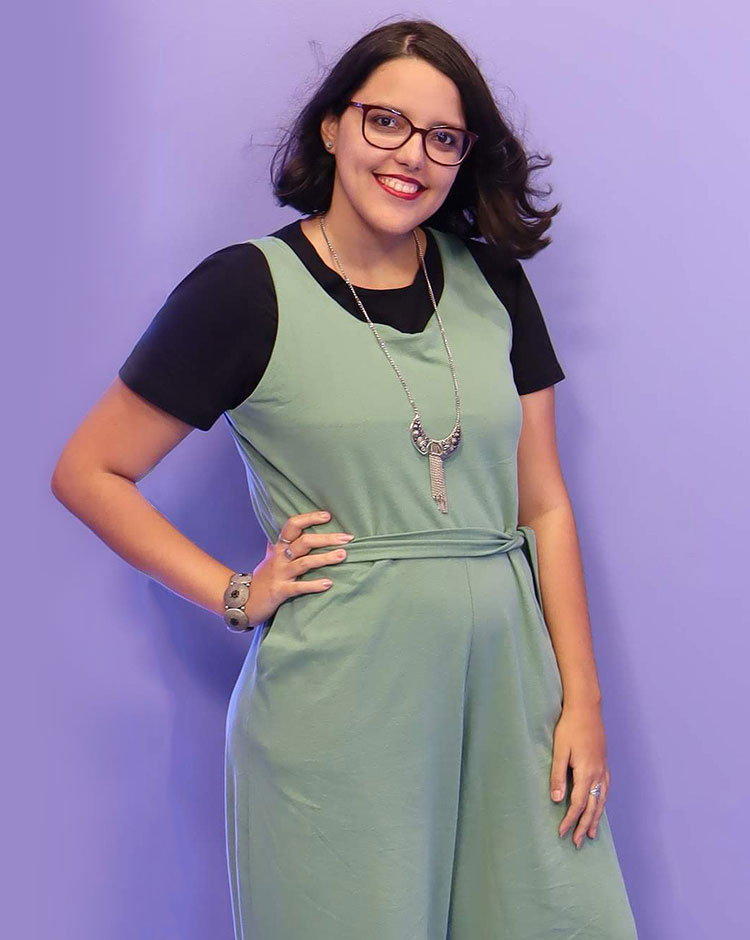
You’ve probably come across a beautiful piece of calligraphy at some point in your life – either an artist got your attention online or maybe you’ve received a gorgeous wedding invitation. So you thought to yourself: how can I learn more about this amazing art form that many think has been lost in our current digital era?
It isn’t like that at all. Similar to hand lettering, calligraphy is also very much still alive these days.
Note: This post contains affiliate links, which means if you happen to purchase something, I’ll make a small commission at no extra cost to you! See my full disclosure here.
So, what is calligraphy?
The term calligraphy comes from the greek, which quite literally means “beautiful writing”. I know the literal definition makes it seem like calligraphy is all about writing. It’s incredibly common to think that handwriting is the same thing as calligraphy, but that’s just not true. People tend to believe that calligraphy has to do with how beautiful your handwriting is. That is a huge misconception. Calligraphy is essentially the art of writing letters with a specific tool.
People also tend to think (especially due to many internet trends) that calligraphy only means cursive or script letters. But calligraphy is the origin of all written forms, it is where it all began. To this day, we still follow several rules that were created back in the day with the creation and evolution of calligraphy. Think back to when type didn’t even exist. If you look at many fonts these days, they still follow many of the rules that were created in those old days.
In calligraphy, we use basic strokes to form letters and words. It is very doable even if you don’t have great handwriting. Great calligraphy can be achieved by deliberately practicing those basic strokes. It is usually done with a nib, broad-tip pens, brush pens, and other instruments or tools.
Handwriting vs Calligraphy
The biggest difference between handwriting and calligraphy is that there’s no contrast when we’re writing something with our handwriting. And when we’re doing calligraphy, the tools usually can give you some type of contrast.
What does that mean, you ask? It simply means that the tools we use to create calligraphy give us different types of contrasts on each part of the letters (and you can always refer to classic alphabets to learn where these contrasts go on each letter because there are still some rules.) Calligraphy is essentially writing letters by following a historical alphabet and using tools that can create some sort of contrast in the strokes of each letter.
Can I learn calligraphy even if my handwriting isn’t good?
Absolutely! We have already established that calligraphy has nothing to do with your handwriting, right? I know it may sound boring, but it really is all about practice. If you take the time to learn the basic strokes of calligraphy, you’ll be able to do it. With time and a lot of practice, you can get there. And since calligraphy isn’t only cursive, you can also try and learn different styles, such as blackletter or even a simple sans serif style.
The History of Calligraphy – let’s go back in time!
It’s very hard to cover every single moment in calligraphy history – since it’s an art form that has evolved for more than two thousand years – before it was even considered an art form. Calligraphy actually started as writing and it has been developed and changed throughout the years. But here I’ll give you a brief overview of some of the most important moments in Western calligraphy and the Latin alphabet.
1700-1500 B.C. – Phoenicians (phonemic writing)
Writing as we know it, was developed by the Phoenicians on the eastern shore of the Mediterranean between 1700 and 1500 B.C. Their writing isn’t considered a full alphabet because they lack characters such as vowels. It is considered, though, the first phonemic writing. The evolution of that alphabet was invented by the Greeks, who added vowels.


3500 B.C. – Egyptians
The Egyptians developed their writing through pictograms, ideograms, and phonograms. They created an alphabet that consisted of 24 symbols and each of them represented a consonant.
Fun fact: In ancient Egypt, they used the papyrus plant for many things, including as a writing material. After the decline of their civilization, it continued to be used for over 2,000 years in the Western world. Designer Chris Costello created the ‘Papyrus’ font inspired by what the English language would have looked like if it existed back then, and he thought it would probably be written on a papyrus. (who remembers the amazing SNL sketch ‘Papyrus’ with Ryan Gosling?!)
1st Century – Roman (Latin alphabet)
From the Greek alphabet, the Etruscans developed the Etruscan alphabet. Then the Romans developed the alphabet we use today, which is influenced by both alphabets (Greek and Etruscan). The Roman (or Latin alphabet) has evolved into many styles, over the years. The Roman capitals are incredibly popular until nowadays, many artists still refer to it as a source of inspiration. A pretty great example of this type of lettering can be found in Trajan’s Column in Rome. You can totally tell that the name of the Trajan typeface came from there, right?!

8th Century – Carolingian Minuscule (lowercase letters)
With the end of the Roman empire, the everyday writing disappeared. During the reign of Carl, he issued a reform decree to reestablish a new writing standard. The Carlovingian minuscule was the development of minuscule (or lowercase) letters as we know them today.
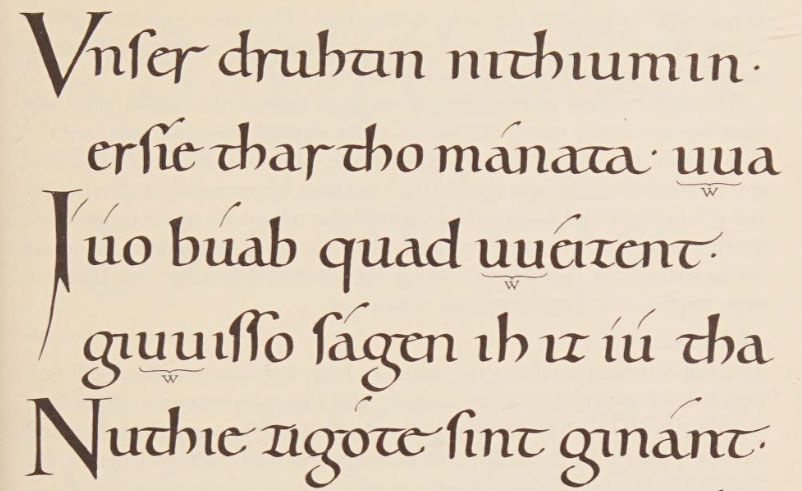
12nd-16th Century – Gothic
What we mostly refer to today as Blackletter or Old English, started in the Gothic period. The Gothic style evolved from the Carlovingian style, which was up until that point the standard writing in most of Europe. There was also an evolution within the Gothic letters – several different styles were developed during this period. In Italy, for example, they developed a different version called Rotunda (or Italian Gothic). This style eventually evolved into alphabets with both lowercase and uppercase letters.

1450 – Type invention
Up until the invention of type by Johannes Gutenberg around 1450, books were written by hand. Professional calligraphers had to follow an official model so all the books would look legible and visually cohesive. Gutenberg is considered the inventor of type. It was his printing of the Bible made with movable type that is known today as the first printed book in history. He developed a type system that was supposed to look like it was written by hand, which was based on the Gothic style.

15th-16th Century: Humanistic
By this point, most of Europe was using Gothic script as a standard way of writing. But one specific country was very critical of it, as the Italians weren’t happy with it. During the Renaissance era, the Humanists began to develop the Humanistic writing style. They were looking to replace the Gothic style.
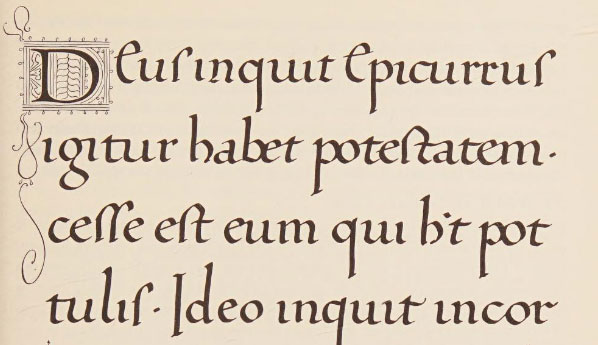
16th Century – The Cancellaresca
The Cancellaresca was developed from the Humanistic minuscules. It followed the development of both Roman and Italian styles.
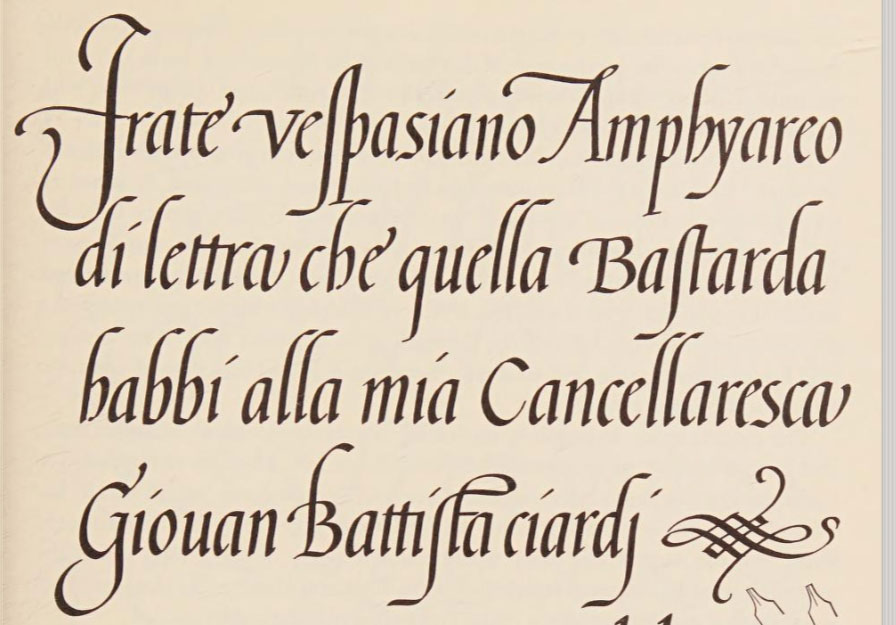
17th century – Copperplate Script
In the 17th century, several books were being produced in some European countries. The name of this script originated because they would use copperplate engraving to copy the scribe’s writing and style. To this day, the Copperplate script is still incredibly popular.

19th century – Roundhand
The Roundhand style started as what we commonly refer to as script nowadays. It was developed for use in testimonials, diplomas, and stuff like that. It was also the first style that was considered more drawn than written.

20th century – Foundational
Edward Johnston developed the Foundational calligraphy at the beginning of the 20th century. It’s considered that he revived calligraphy by practicing the medieval scribe.
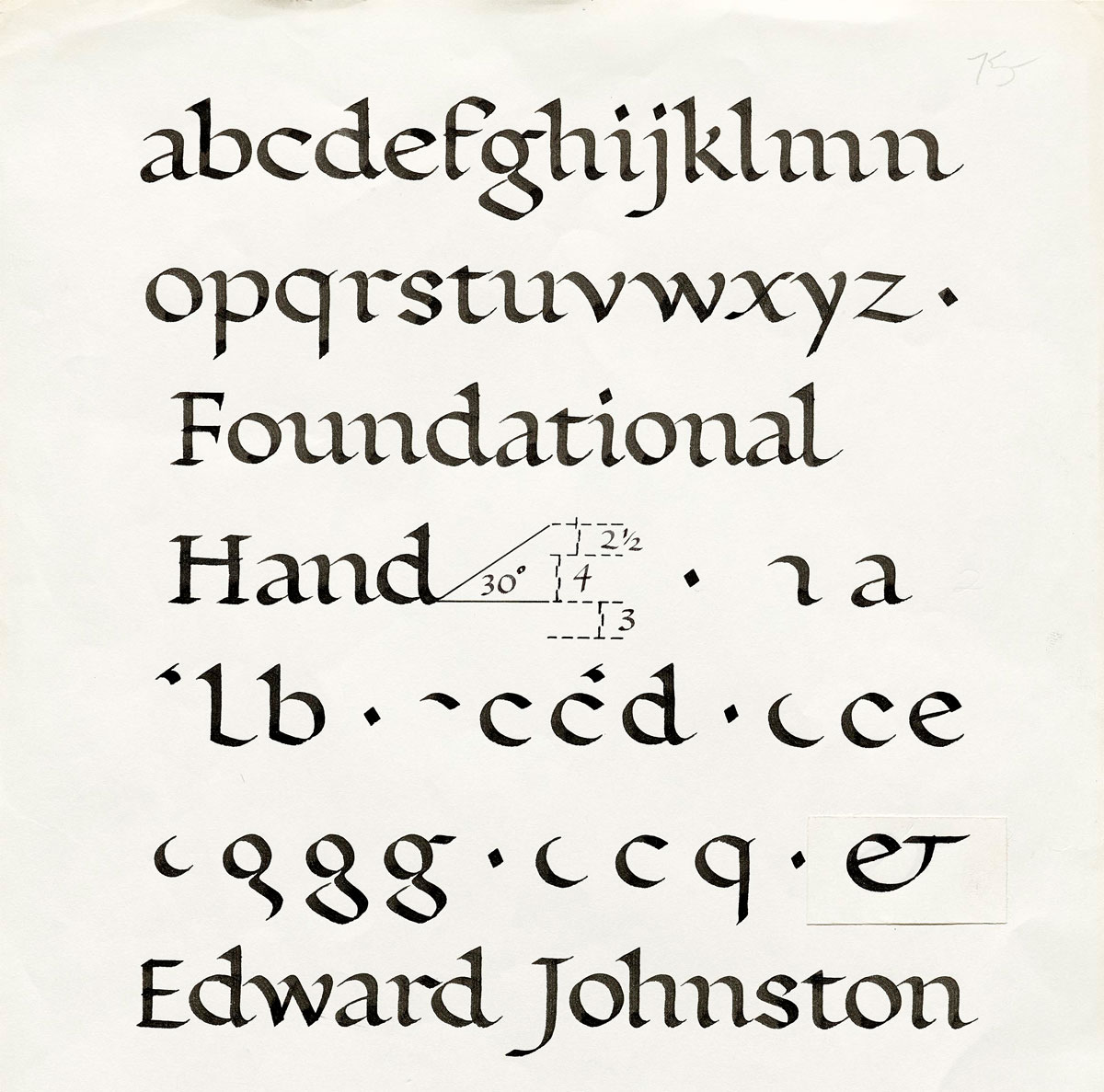
Present Day
Alright, we have arrived to present day! While you may be thinking: who the hell still writes by hand these days? If you look at the term ‘calligraphy’ on Google Trends, you can see that its popularity is pretty massive. It reached its peak back in 2018, but it’s still pretty popular as of today.
And as I’ve said before, I know that modern calligraphy has been hugely connected to script letters/cursive but as we have seen in this article, calligraphy is so much more than that. Literally every single popular typeface we see today can be connected to styles created back in the day. You can legitimately create any style you want by doing calligraphy. You only need to find the exact tool that will convey the exact style you’re trying to create.
I think one of the best examples of how calligraphy can be created is Seb Lester’s work. He is one of the most successful calligraphers these days. If you take a look, especially, at his Instagram videos, you’ll understand. The guy can create absolutely anything with any calligraphy pen. You can see that while he does script calligraphy very well, he also has a variety of other styles in his belt.
What does a calligrapher do?
A calligrapher can be involved in so many different projects. It can range from wedding invitations to magazine covers, live events, advertising campaigns, products, book covers, art pieces, and so much more. The possibilities here are endless!
What are the most common tools and pens used in calligraphy?
Here are some of the standard calligraphy pens and brushes:
Dip Pen
Probably a calligrapher’s favorite. The great thing about dip pens is that they can be used with a variety of nibs, which can give you the possibility of creating many different styles. Nibs are usually flexible, giving you great contrast. They don’t come with inks, so you can also experiment by trying some inks. For beginners, I recommend that you start with a pointed nib, such as the Nikko G nib.
Fountain pen
Fountain pens are a bit similar to the dip pens, but the difference between them is that the fountain pen comes with refillable ink and you can’t actually change the nibs of thispen. There’s a bunch of different models out there – from cheap options to luxury items. If you’re just starting out and want to have fun, the Pilot Pen Precise Varsity is a great way to experiment.
Brush Pen
Brush pens can be really trick for beginners. If you start by using a more advanced pen you can get a bit frustrated. I recommend using a hard tip brush pen first, such as the Tombow Fudenosuke Brush pen. After you practice for while, you can start using the Tombow Dual Brush pens. With a brush pen, you can create script letters and many other styles.
Parallel pen
Now the parallel pen is a fun pen to try! This pen comes with a metal nib, which allows you to create broad and thin lines. It can also be used for a number of different styles. I recommend getting the Pilot Parallel Pen so you can have fun with it.
Paint Brush/Aqua Brush
Using a paint brush to do calligraphy is more advanced and requires a lot of practice. There are so many different brushes on the market out there – it really depends on the style you’re trying to convey for your pieces. A brush can have a round, flat, or liner tip. You can also experiment with the aqua brush. The great thing about using brushes is that you can also experiment with different inks: you can use watercolors, gouache, etc. I recommend getting the Aqua brush first though – it’s easier for beginners.
Where to go from here
If you found this guide on calligraphy helpful, I hope you can share it with your friends! Whether you want to go professional or do this as a hobby, you can learn more about calligraphy here. Let me know in the comments if you have any questions!
Resources I used to write this article on what is calligraphy:
- A dictionary for calligraphers by Robert C Hyde
- The history and technique of lettering by Alexander Nesbitt
- The story of writing by Donald Jackson
- The art of calligraphy: Western Europe & America by Joyce Irene Whalley


